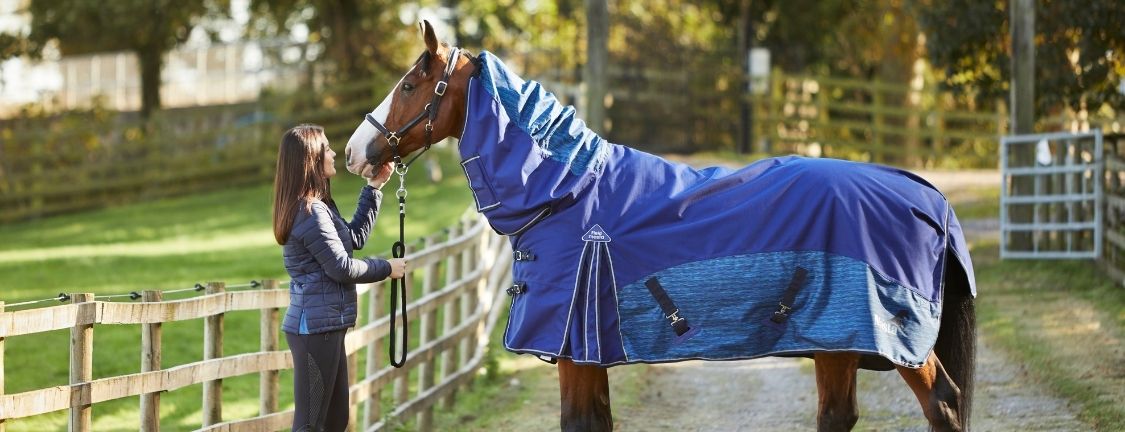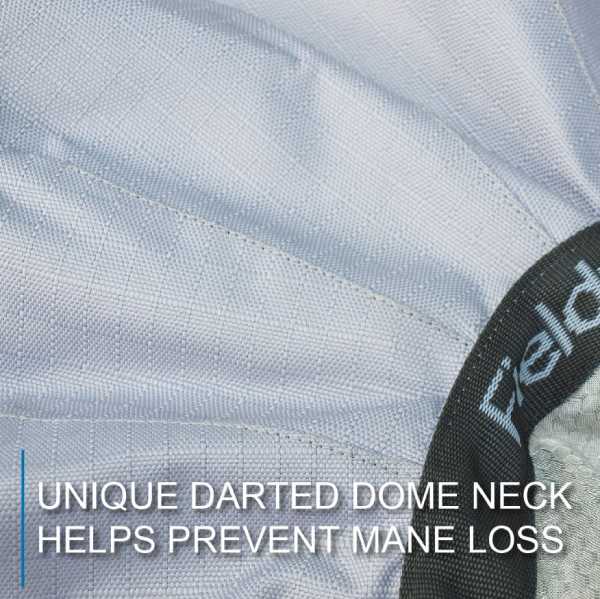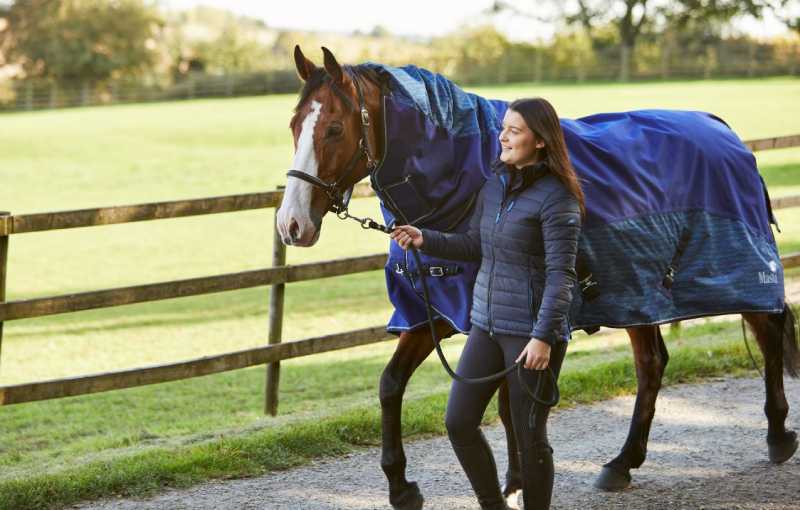
Mane loss in horses is a real issue for a lot of horse owners during the winter months and so we set out to try and create a rug that helped prevent mane loss, now you can wave goodbye to having half a mane to plait and join our #nomorebadhairdays revolution.
Horses can lose their mane for many reasons, rubbing, over-rugging, and badly fitting neck covers being the primary problem. The health of the hair follicles is also a factor, when the hair is starved with oxygen the hair follicles can fall out. The Fieldmasta horse turnout rug came about from a need to create a rug that solved these issues.
The development of the Fieldmasta turnout rug: So where do we begin in re-designing a fixed neck rug? Most neck covers on turnout and stable rugs aren’t fit for purpose, they are static, rigid, and designed for horses to stand still rather than put their head down and graze. Horses spend a lot of their turnout time grazing (some more than others!), approximately 70%, so neck covers should be designed with this in mind, fitting close to the neck and moving with the body rather than being restrictive – there is nothing worse than a rug that has a wind tunnel type neck cover when your horse puts its head down to graze. After a lot of research, sketching, and prototypes we came up with the idea of creating an articulated neck cover that moves with the horse. Inspiration was taken from articulated sleeves on jackets. The unique dome neck is designed with a series of darts that help to create a greater surface area of material over the top of the horse’s neck this creates extra volume and also enables the material to stand off the mane, allowing air to circulate.

The Fieldmasta Turnout rug became a reality:
It took a year of testing to get the final design exactly how we wanted it. Turnout rugs need to be pretty tough when you think about it. Rugs are expected to withstand whatever your horse throws at them on a day-to-day basis. Keeping them warm and dry out the wind and rain as well as staying put when half a ton of animal rolls in the mud. We tested the Fieldmasta prototypes on a variety of horses from Arabs to Irish Drafts to ensure we had a design suitable for all shapes and sizes. The prototypes were well and truly put through their paces here on the exposed hills of Yorkshire in wind, rain and mud. . . luckily it always seems to be raining in Yorkshire! "I have recently changed to using Feildmasta rugs for the dome neck as my horse always losing his mane in the winter, no matter what I have tired. Since moving the mane has started to grow back in, and I have ended up purchasing the full weight range of rugs for him! They have proved to be excellent value, tough against rips and tears and have withstood the first winter very well. Very impressed!"
Rachel J

How to prevent rugs from rubbing your horse’s mane:
It is vital to ensure that your horses’ rug is the correct size and fitted to your horse correctly this will help to eliminate potential rub points. Be sure to check rugs throughout the change in seasons, as changes in body condition through workload and weight can affect rug size, you may need to alter straps or even change rug sizes. Between seasons, when your horse’s coat is changing is a prime time for rubs to appear, as your horse’s winter hair is softer and more fragile than summer hair, and rugs worn for longer periods of time. Keep your rugs clean and the lining free of grease and dirt build-up as this can contribute to rubbing and pulling of hair. Some people find spraying mane and tail detangler or coat shine helps to keep the coat and mane in good health and find it prevents rubbing. Others choose not to use a rug with a neck at all – obviously, this is all down to personal preference! Whatever style of rug you decide, a well-fitting, seasonal rug is vital to maintain a happy healthy horse as well as preventing rubs. You can check out our rugging guide here .
